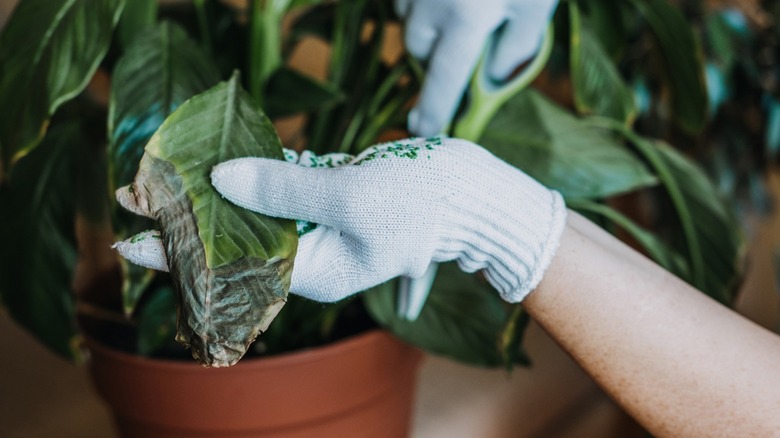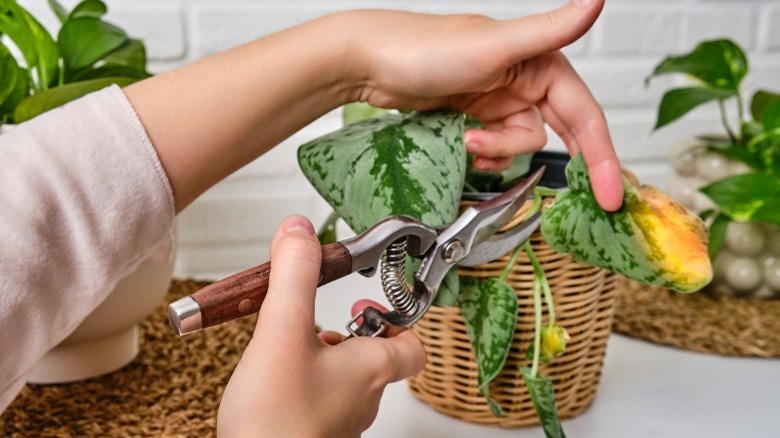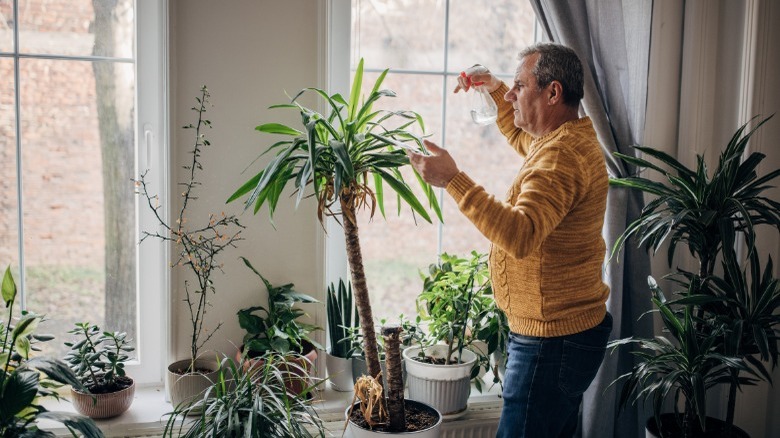How To Salvage Your Sunburnt Plants
The heat and brightness of summertime might be good for your pool days and trips to the beach, but it's not always great news for your plants. Yes, plants need sunlight in order to grow, but what happens when they get too much sun? They don't turn red and blotchy the same way we do, but they still suffer from a great amount of damage. When plants get sunburned, the chlorophyll in the leaves starts to disintegrate, so they look pale, bleached, or faded.
If your plants have spent too much time in direct sunlight, you may notice the leaves have gone from gorgeous green to yellow or white. If left untreated, they'll eventually become brown and brittle. The bad news is no matter how much you water your plants, those sunburnt leaves will never be healthy again. The good news is there is a way to salvage what's left.
How to salvage your sunburnt plants
As we mentioned earlier, there's no hope of saving the damaged parts of the plant after they've been scorched by the sun. Once they're burned, they're burned. When this happens, the first step is discarding the damaged or dead leaves by cutting them off. If the entire leaf isn't damaged, however, carefully trim off the parts that are. Next, put the plant in an area where it will receive filtered light, not direct (that's what got it into trouble in the first place).
If you aren't familiar with the term, filtered light refers to direct sunlight that is made less powerful by objects like blinds, curtains, or trees outside the window where the plant sits. It isn't as damaging to the plant since there's a barrier between it and the sun. If you're still worried your healthy plants may be in danger of getting sunburned, don't be. There are steps you can take to prevent it.
Ways to prevent sunburn in plants
Any time you purchase a new plant, make sure you know exactly how much sunlight it requires. Nearly all plants come with care instructions, so there is little room for error; it's all spelled out for you. For example, snake plants need next to no sun, whereas a jade plant needs about four hours of direct sunlight a day in order to thrive. However, your plants need time to adjust to the sun's harsh rays. It's the same way our eyes take a moment to adjust after exiting a dark room.
Instead of putting your indoor plant outside the moment summer hits, slowly introduce it to the sunlight. After you bring it home, place it in a partially-shaded area. Start by giving it just a couple of hours during the morning or afternoon sun. After a few days, you can increase its time in direct sunlight, which should only be around four to five hours at most. Think of this as giving your plants a nice base tan, which makes it more difficult for them to get sunburned.


